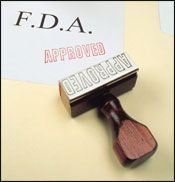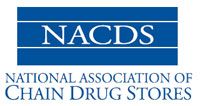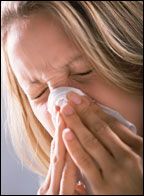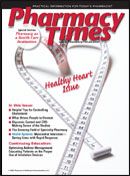Publication
Article
Pharmacy Times
News Capsules
Personalized MedicineWill Change FDAApproval Process

In a recent speech to business students atSt. John's University, FDA CommissionerAndrew von Eschenbach, MD, said thatpersonalized medicine will lead to changesin clinical trials, the business model forthe pharmaceutical industry, and the FDAprocess for new approvals. Personalizedmedicine will be able to predict howpatients react to specific medicationsbased on their genetic profiles.In the future, clinical trials will seek todetermine how medications work in thebody and in patients with certain geneticprofiles. He explained that more cooperationwill be necessary among pharmaceutical,biotechnology, and medicalcompanies. The agency also will have torevise its approval process.
Heart Association Unveils "Heart360"

When patients come to collect their cholesterol and bloodpressure (BP) medications or have questions about preventingheart disease, pharmacists can suggest they tryan innovative new Web tool from the American HeartAssociation (AHA)—Heart360—an online cardiovascularwellness center, where patients can enter their BP,cholesterol and glucose numbers, log physical activities,record their weight, and keep a medication diary.The entries are stored online in a secure, passwordprotectedsystem to be charted, compared, and updatedto help patients track their progress. A variety of linksto relevant AHA content are also available at the site.
"Statistics show millions of people are turning to theInternet for health information," said AHA President TimGardner, MD. Powered by Microsoft HealthVault, Heart360replaces and expands on the AHA's former Blood PressureManagement Center. New users can visit www.heart360.org to set up an account.Previous users of the Blood Pressure Management Center can log in normally, andtheir data will transfer automatically to Heart360.
Texas Pharmacy School Houses Pharmacy Antiques
The University of the Incarnate WordFeik School of Pharmacy is home tosome precious artifacts. The PharmacyMuseum Foundation of Texas is donatingan antique collection worth $250,000 tothe school.
The inventory includes >4000 antiquepieces from the pharmacy industry datedbetween 1850 and 1950. The pharmacycollection will be in the lobby of the FeikSchool of Pharmacy.
"It is with the greatest of pleasure andhonor that the Feik School of Pharmacywas selected to house and maintain thiscollection for future generations to studyand appreciate. We are glad to have itgrace our building and will proudly showit off to the public," said Arcelia Johnson-Fanin, PhD, founding dean of the schoolof pharmacy.
Bill Walker, chairman of the foundation,collected the items related toTexas pharmacy during his nearly 34years in pharmaceutical sales. Many ofthese old drugstores had been in businesssince the early 1900s and beganto disappear with the growth of superstorepharmacies.
More Kids Using Meds, Study Finds
A new study of medication use in children aged 5 to 19 hasfound increased use of drugs prescribed for several conditionslike asthma, depression, and attention-deficit/hyperactivity disorder,with use of type 2 diabetes medications doubling amongAmerica's tweens and teens over the 4-year study period(2002-2005).
The study was conducted by researchers from the Saint LouisUniversity School of Medicine, Express Scripts, and the KansasHealth Institute. The findings show that whereas more childrenare being diagnosed, and doctors are increasingly using medicationto treat these conditions, the findings also point to moredisease, a trend researchers attribute in large part to the spikein childhood obesity rates.
"Our findings indicate that we, the doctors, are doing a betterjob of screening children and diagnosing chronic conditions,"noted Donna Halloran, MD, MSPH, assistant professor of pediatricsat Saint Louis University School of Medicine. "A greatexample of this is blood pressure, where there has been a bigpush to identify and treat children in need." She also noted,however, that, "our findings show that childhood obesity notonly has long-term health implications, but also impacts children'simmediate health."
Among other findings of the study, appearing in the November2008 issue of Pediatrics, rates of growth in medication use werehigher among girls than boys; although boys still take moremedications for chronic conditions, the gap has become narrower.For example, researchers found a 147% increase in type2 diabetes medication use among girls over the study period,compared with a 39% increase among boys. Another exampleof a higher increase among girls was seen in antidepressants,where use increased 6.8% among females aged 15 to 19, butdeclined slightly among males in the same age group.
Association Pledges: "See the Return of NACDS"

The National Association of Chain DrugStores (NACDS) will use a new theme todrive its member-service philosophy andmember communications during the currenteconomic climate: "See the returnof NACDS."
As testimony to the value of chainmembers' involvement and the validityof this theme, the association alsoannounced an analytical model that measurespublic policy victories and theircost savings for member companies. Theanalysis shows that the success of 2007activities saved the NACDS chain members>$4.1 billion in operational costs. Tomeasure the return effectively, the organization'sresearch team developed ananalytical model, based on a hypothetical10-store chain and a 25-store chain.
The 10-store chain saved $1.03 millionand the 25-store chain saved $2.9 million.Victories that contributed to those savings:
- Prevention of federal track-and-trace requirements
- Change in the approach to NationalProvider Identifier requirements
- Delay in the implementation of theMedicaid tamper-resistant paperrequirement
- Maintenance of the TRICARE prescriptionsby preventing a transitionto mail order for this program
"NACDS works aggressively to createa favorable political and business climatefor chain members—in Washington, DC,and in state capitals across the country,"said Steven Anderson, IOM, CAE, NACDSpresident and chief executive officer. "Wevigorously advocate for legislation andregulations that benefit our membershipand work constantly to amend or defeatlegislation that would increase cost orimpose unnecessary burdens on chainpharmacies."
New Findings on Zyrtec Rx-to-OTC Switch

A new study of patients using the allergy medication Zyrtec followingits switch from prescription to OTC status reveals that themajority of users of the OTC product—84%—moved over fromother OTC products, rather than from other Rx products as manyhad expected. Only 27% of prescription Zyrtec patients "followedthe molecule" and switched to Zyrtec OTC.
These findings by researchers at Wolters Kluwer Health andThe Nielsen Company go against conventional thinking about thedynamics when a prescription drug switches to OTC. The datashow that carryover from a base of prescription Zyrtec users waslower than some expected: of all patients who migrated to ZyrtecOTC from other allergy therapies, only 6% were former prescriptionZyrtec users. Another interesting finding: the switch to OTCled to increased spending on allergy medications for some consumers,suggesting that access to OTC may be more importantthan the cost of the medications.
Many Forces Driving Global Drugs Market

The recently released IMS Global Pharmaceuticaland Therapy Forecast providesinsights into the industry for 2009,predicting slowing growth in mature marketsbut higher growth in "pharmerging"markets overseas. The specialty arenais expected to contribute 67% of totalmarket growth.
Overall growth in the global pharmaceuticalmarket is expected to be inthe 4.5% to 5.5% range in 2009, a pacesimilar to 2008, according to the report;in the United States, growth is expectedto be 1% to 2% for both 2008 and 2009.Contributing to the slower growth is less-than-expected demand for recently introducedproducts, as well as the economicclimate, which appears to be having animpact on doctor visits and pharmaceuticalsales, IMS reports.
The picture for generics is somewhatrosier. IMS predicts generics sales willgrow 5% to 7% in 2009, a level similar to2008, but lower than levels experiencedin 2006 and 2007. An additional $24 billionof branded products, including antiepileptics,proton pump inhibitors, andantivirals, will lose their market exclusivityin the top 8 world markets in 2009,contributing to projected generics salesof more than $68 billion next year.
CDC Updates Pneumococcal Vaccine Advice
The Centers for Disease Control andPrevention's (CDC) Advisory Committeeon Immunization Practices (ACIP) recentlyvoted to recommend that adults aged19 to 64 with asthma receive the pneumococcalvaccine (Pneumovax 23).
Pneumococcal diseases are caused bycommon bacteria and can lead to potentiallyserious bacterial infections like pneumonia,meningitis, and bacteremia. ACIP'srecommendation is based on study datashowing an increased risk of pneumococcaldisease among asthma patients.
The ACIP also voted to recommendthat smokers aged 19 to 64 receive thevaccine, as well as smoking cessationcounseling—marking the first time ACIPhas recommended a vaccine specificallyfor people who smoke. Data show thatsmokers are approximately 4 times moreat risk for pneumococcal disease thannonsmokers.
Study Reveals Treatment Targets for Common Cold

A study published in the online edition of theNovember 1, 2008, issue of the AmericanJournal of Respiratory and Critical CareMedicine found that at the genomic level,the immune response to human rhinovirus—the most common cold virus—and notthe virus by itself, results in common coldsymptoms.
The new study identifies several categoriesof therapeutic targets that couldbalance the immune response in orderto minimize symptoms during a cold andpotentially lead to therapies to preventthe infection. In a randomized, placebocontrolledstudy, the researchers infected17 participants with rhinovirus 16 and a controlgroup of 18 participants were given a shaminoculation in the form of a nasal saline spray.The researchers then scraped small samples ofnasal epithelial cells from the participants. Usinga microarray gene technology, the investigatorscompared the gene expression levels betweenthe infected patients and the control group.
The expression of 6530 genes in infectedparticipants was significantly up-regulated ordown-regulated 48 hours after inoculation,compared with genes in the control group.The study included researchers from Procter& Gamble, the University of Calgary, and theUniversity of Virginia.
Pharmacists Educate Patients on FDA Requirements
As 2009 approaches, pharmacists needto be mindful of some new FDA requirementswhen counseling patients andrecommending medications.
The agency has issued a public healthadvisory on the safe and appropriateuse of UCB Inc's Tussionex PennkineticExtended-Release Suspension. The prescriptionmedicine contains the narcoticingredient hydrocodone that controlscough.
Tussionex should not be given to childrenyounger than 6 years old; cliniciansshould not prescribe and patients shouldnot take the product more often thanevery 12 hours; clinicians who prescribeand patients who take Tussionex shouldknow the signs of hydrocodone overdose;and patients and parents shoulduse a device designed to accuratelymeasure the cough medicine. UCB hasupdated the drug's label to reflect that itshould not be prescribed or used in childrenunder 6 years old and the need foraccurate measurement and dosing.
Another change in pediatric coughand cold medicines is the new labelsand packaging to state "do not use" inchildren younger than 4 years of age. Arecent FDA public hearing prompted leadingmanufacturers of these medicines tovoluntarily transition the labeling.
Pharmacists also should reiterate toasthma patients that all metered doseinhalers (MDIs) containing chlorofluorocarbonswill no longer be available inthe United States at the end of thisyear. Patients will be switched to newerhydrofluoroalkane-containing MDIs. Theswitch gives pharmacists the opportunityto educate patients on the new inhalerdrugs and proper device technique.







